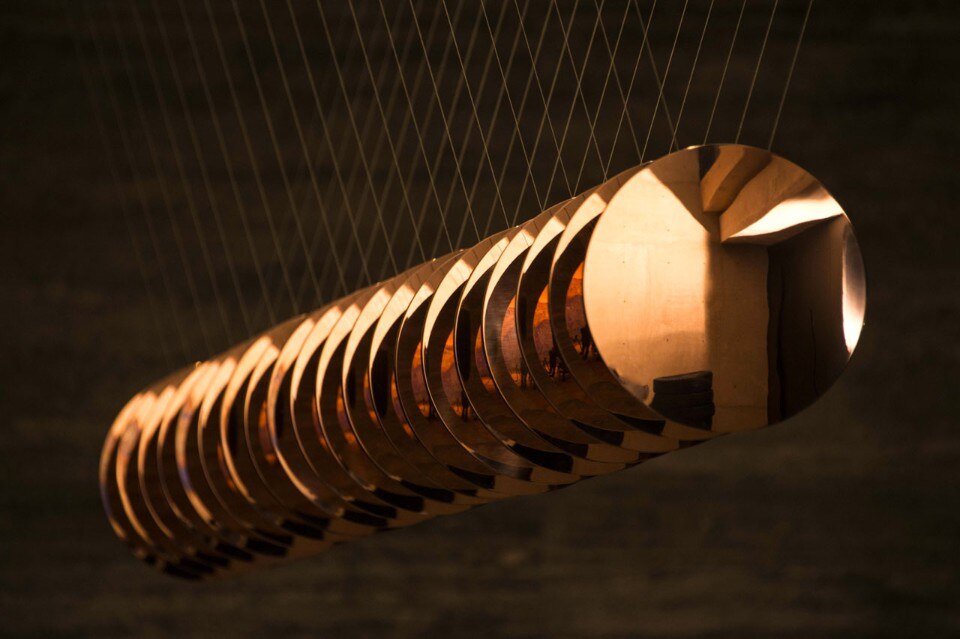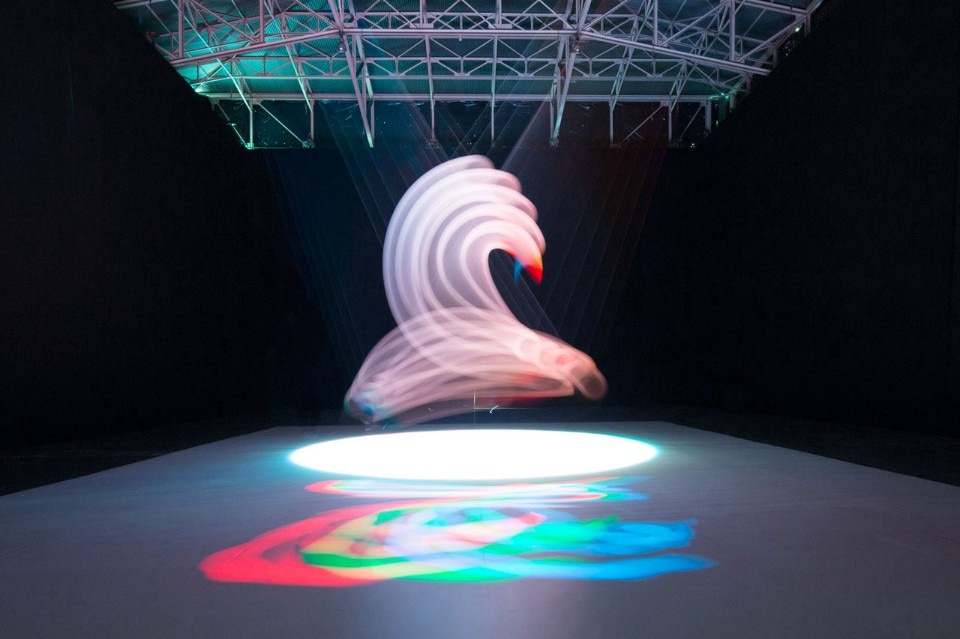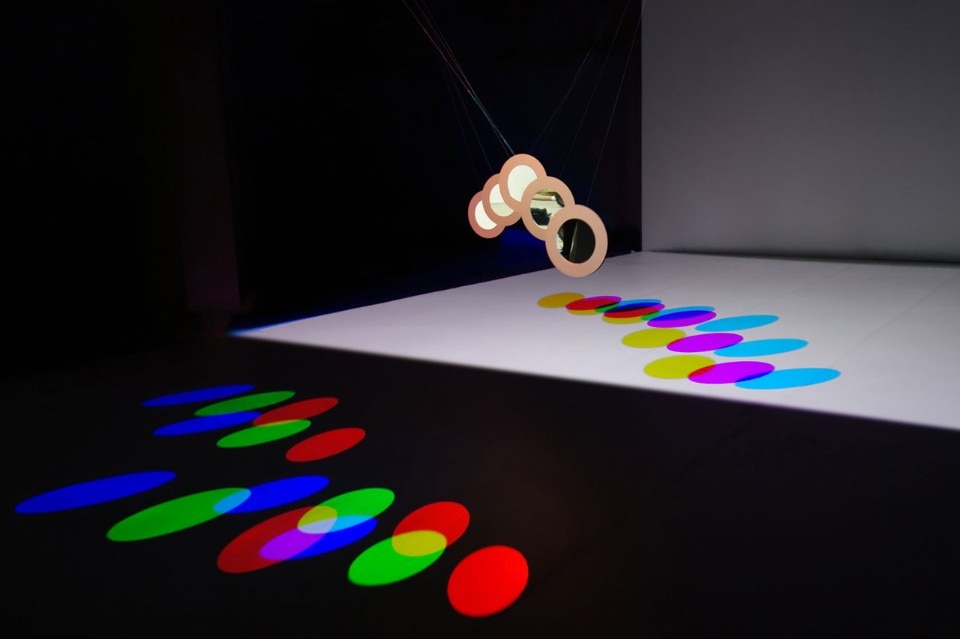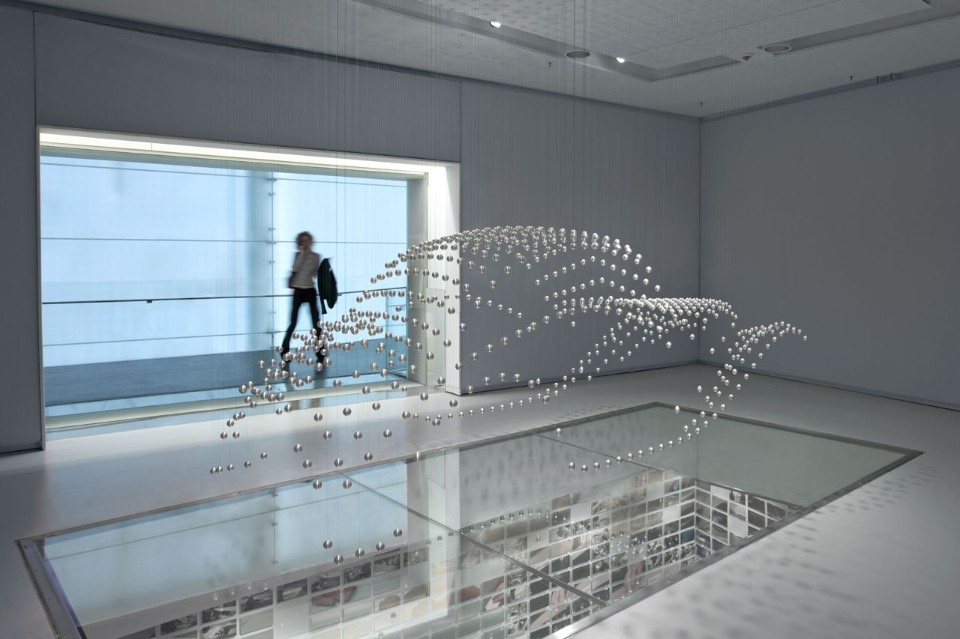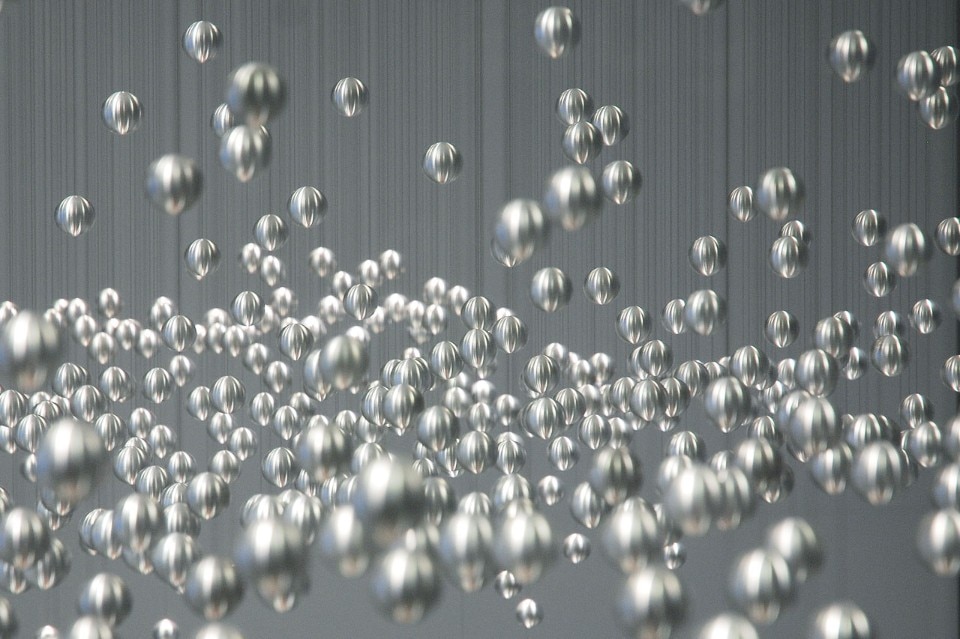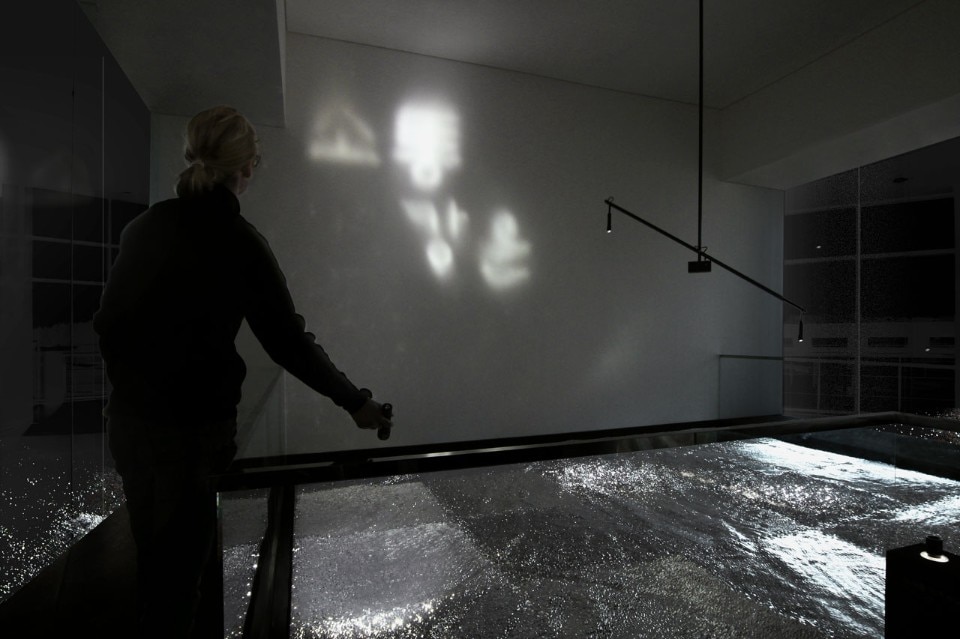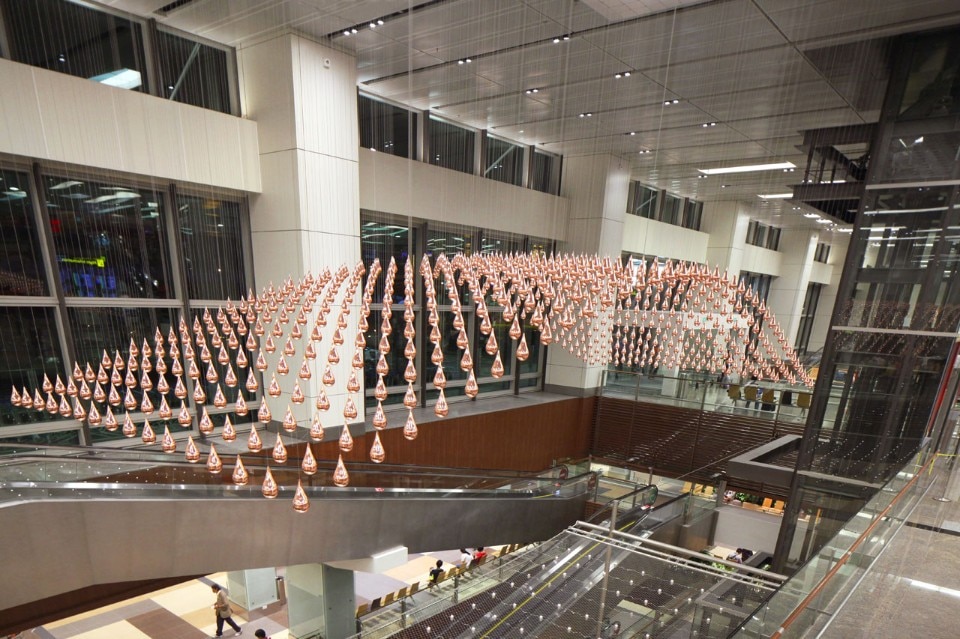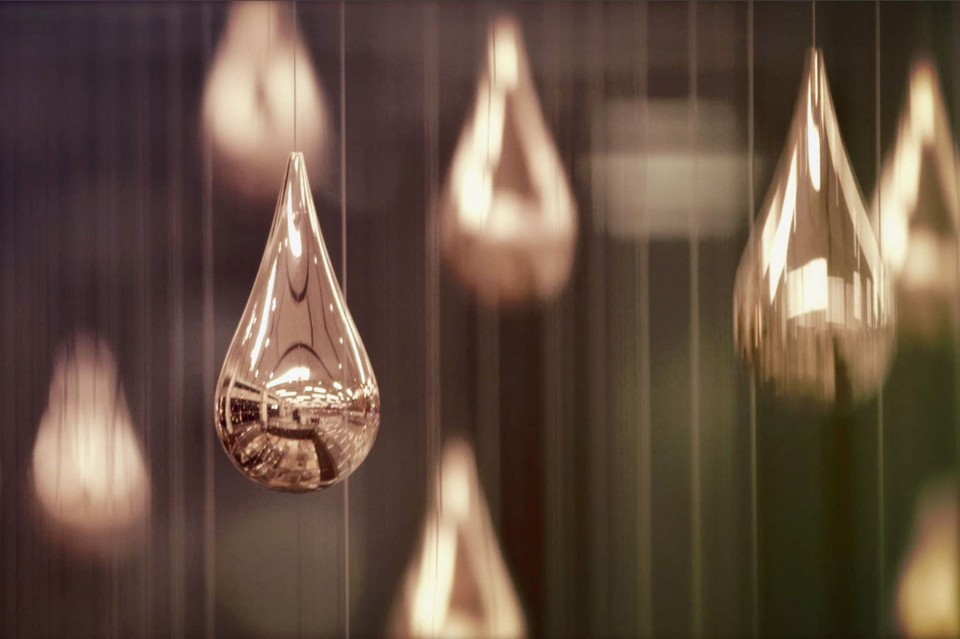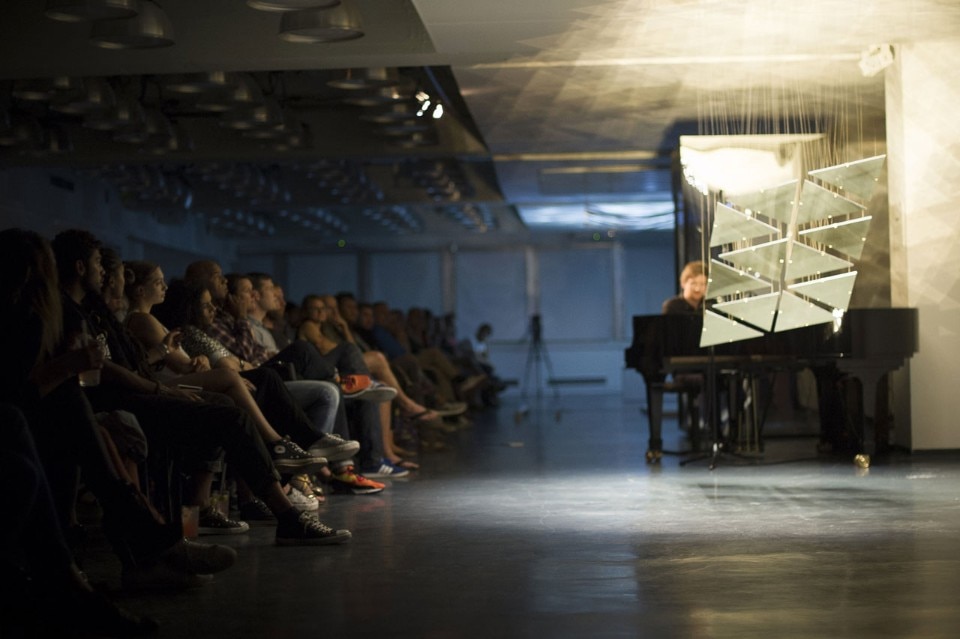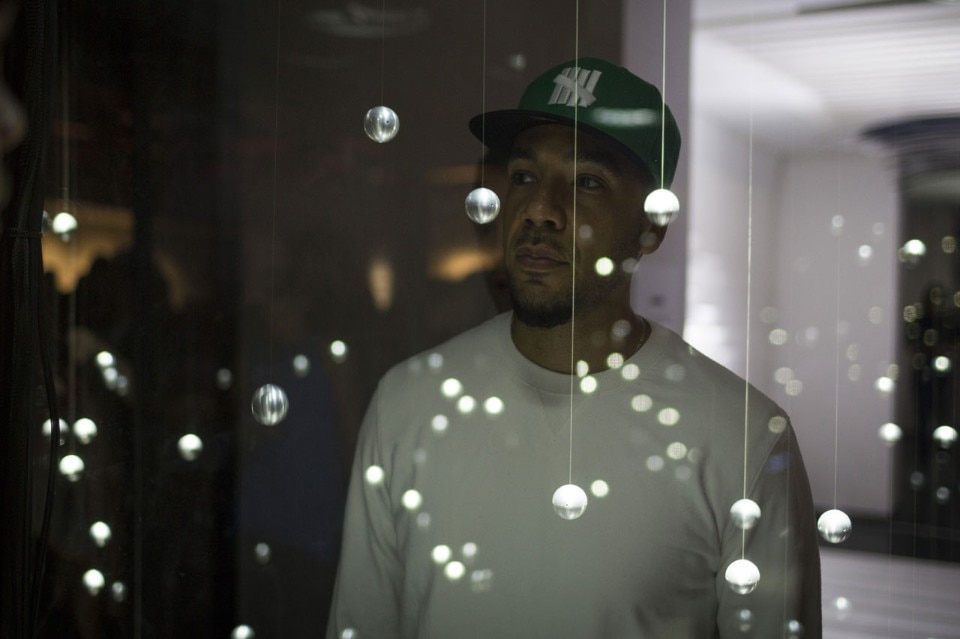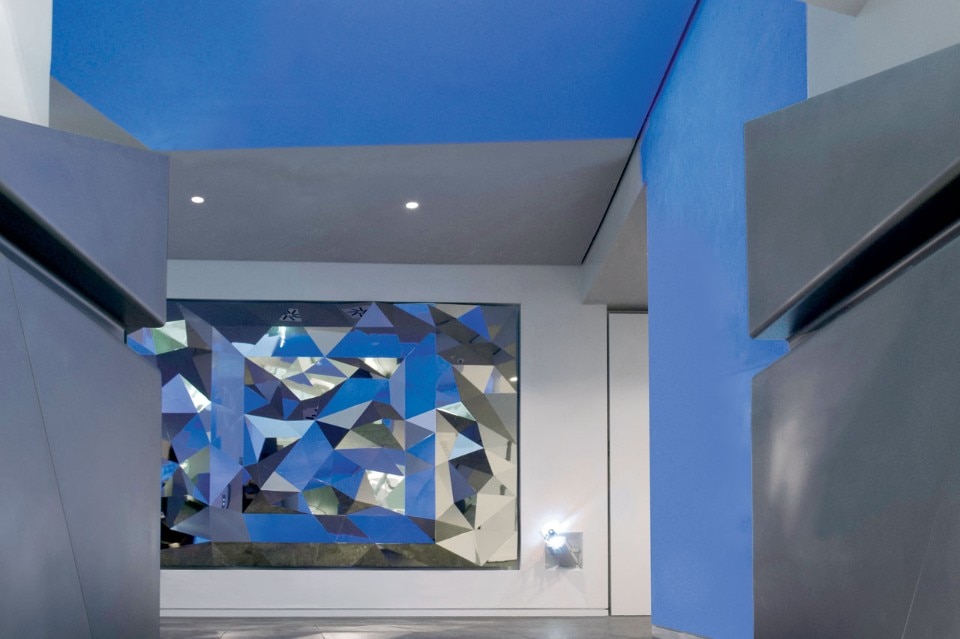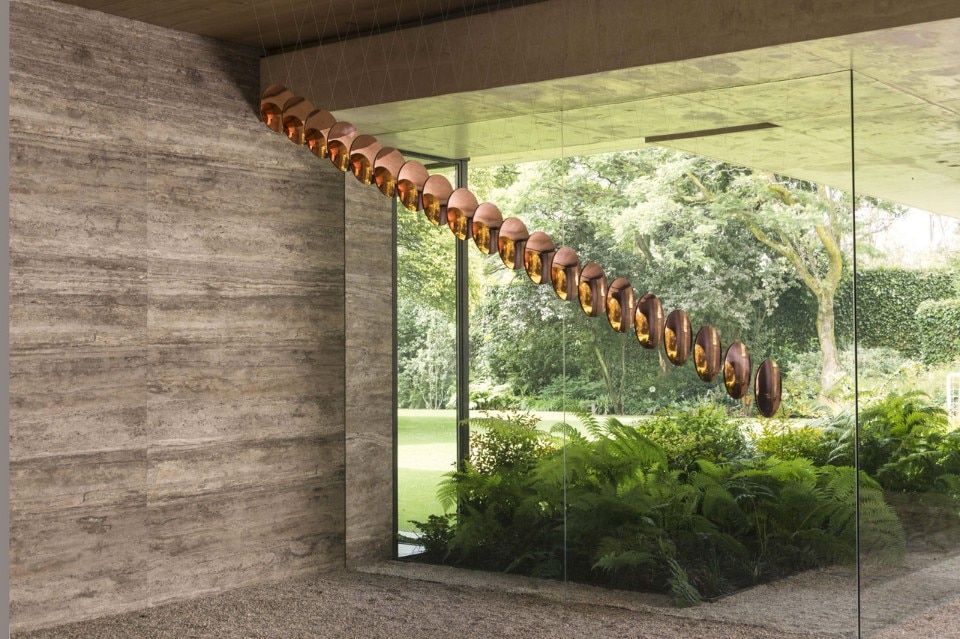
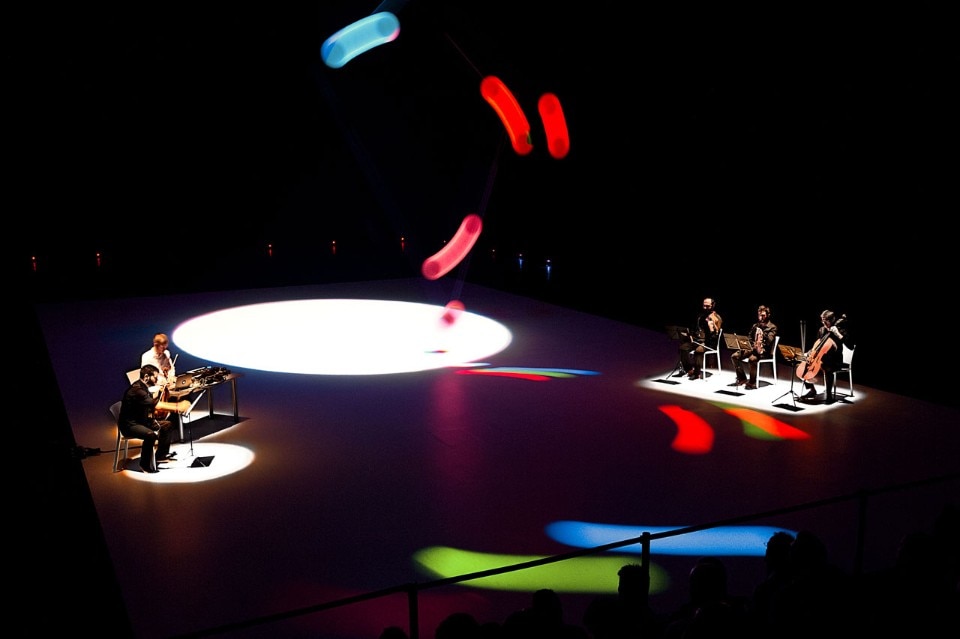
The first phase in the existence of Art+Com was focused on interactivity, occasionally straying into virtual reality, which came onto the scene in the late 1980s. “If we look at the properties of digital means, there are three aspects,” says Sauter, “The first is interactivity, meaning a dialogue between us and objects or installations; the second is Internet, meaning connectivity, the infrastructure that connects things to one another; the third is calculus, meaning the possibility to generate shapes and experiences with algorithms. These are the three pillars of our work. Although interactivity remains important to us, since several years now we have been concentrating our research on calculus, in particular how algorithms can govern the form and behaviour of physical objects. This is where we see great potential. It’s a largely unexplored ambit.”
River is... was built in South Korea. It transports us to the surface of a river with a chromed sheet of metal that reproduces the wavelets on the water. With the help of a flashlight, words from Korean poems appear like the reflection of the sun on the water. “I was inspired by my experience of contemplating the water of a river as if it were trying to communicate something to me by means of its reflections,” say Sauter.
Here, algorithms go from being abstract formulas buried in the memory of a computer to becoming a way to discover unseen and unpredicted aspects of reality. “You need to make your audience want to decipher what the work contains. Be more poetic!” he concludes. How? By looking better, more attentively. How ironic that precisely algorithms, the prime culprits in getting us lost in virtuality, are reminding us of this.


